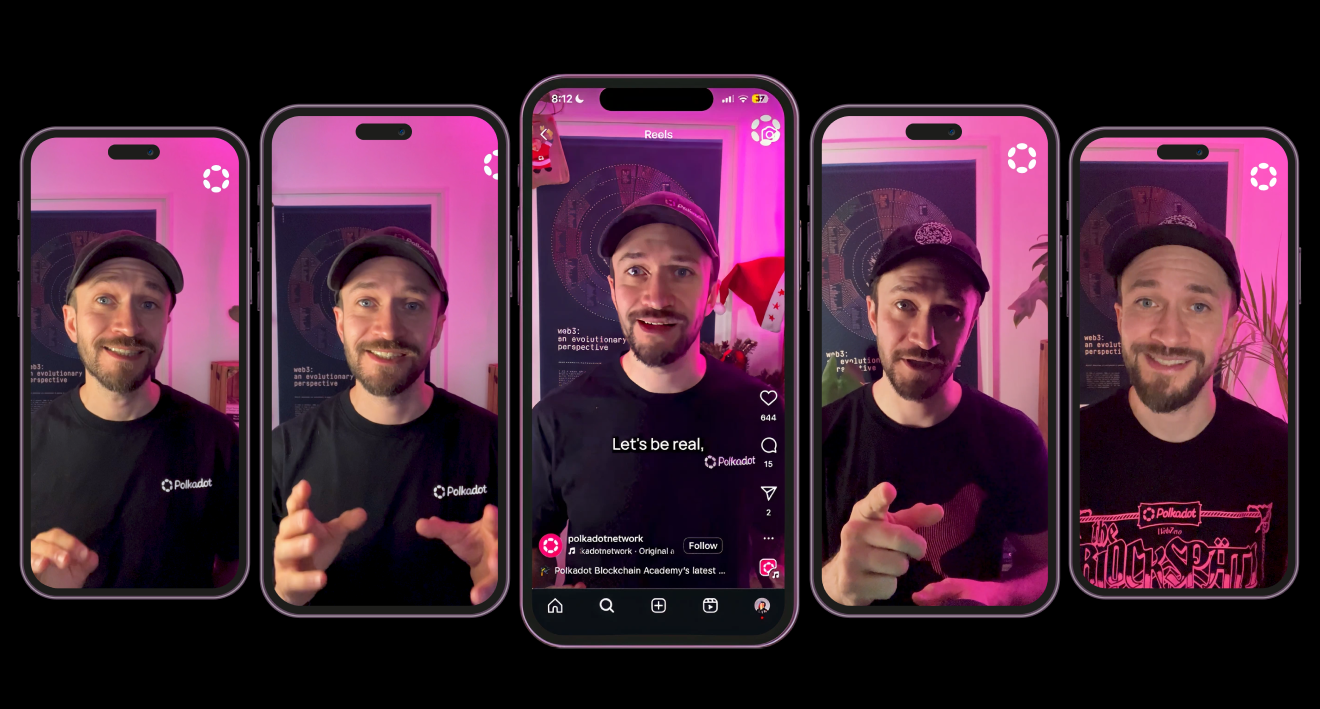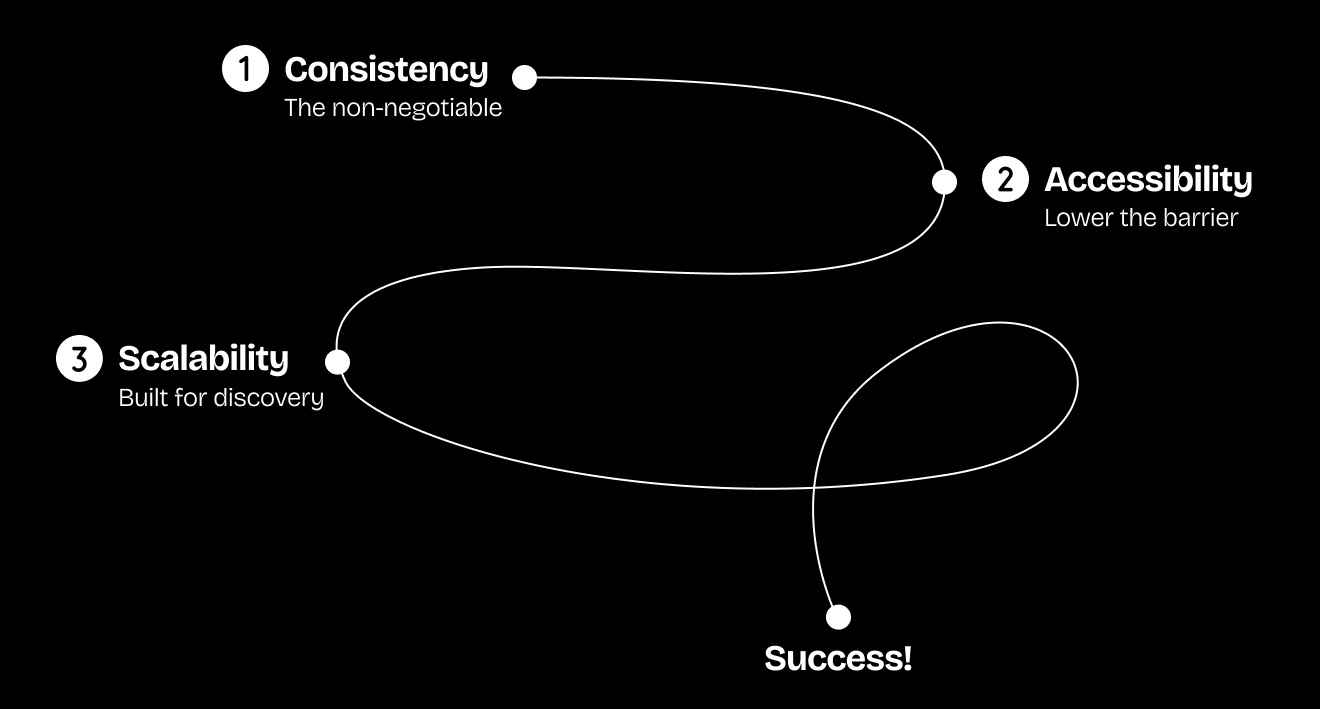Related Articles



Why do some Web3 projects fade after a few months while others build movements that last?
It's not about having a better product. It's not about raising more capital. It's about understanding the difference between renting attention and building owned momentum in Web3 marketing.
Most projects treat digital marketing like fireworks—spectacular bursts designed to capture attention for a moment. But fireworks fade. What actually builds ecosystems are programs: the consistent, recurring content creation engines that keep your community engaged week after week, month after month.
Campaigns are sprints. They're designed around a specific goal and timeline—product launches, conference promotions, hackathon registrations. They might run for weeks or even months across multiple channels, but they have a defined endpoint. When you need focused, deadline-driven results, campaigns deliver.

Programs are marathons. They're the recurring content marketing engines—the weekly show, the monthly spotlight series, the ongoing educational content—designed to run indefinitely. They drive awareness, education, and community retention over time, keeping your ecosystem visible and accessible regardless of what specific campaign might be running at the moment.
So what exactly is a program? A program is a long-term, structured initiative designed to build awareness, educate audiences, and nurture community participation over time. The key difference: campaigns are short-term and time-bound, while programs are ongoing, adaptable systems that serve as the backbone of sustained ecosystem growth.
The difference isn't really about duration or channels. It's about what happens when the campaign ends. If there's nothing underneath to catch people, they leave. Programs are what catches them.
Both matter. But if you're serious about building a durable Web3 ecosystem, programs do the heavy lifting.

Why Web3 Needs Programs More Than Most Industries
Let's be honest: Web3 is complicated. Attention spans are short, and the tech is abstract enough to make most people's eyes glaze over. Without consistent touchpoints, even the most innovative projects don’t make a dent.
Programs solve this by creating a continuous spotlight—translating complex blockchain concepts into tangible, relatable stories that attract builders, users, and partners. Because programs are long-term by design, they're built to evolve. New projects launch daily in Web3. Market conditions shift. Programs give you the flexibility to iterate and adapt without losing momentum in your marketing strategy.
Even more than Web2, onboarding in Web3 is a journey through multiple stages:
Both campaigns and programs can move people through these stages, but they do it differently. Campaigns create focused momentum toward specific conversions. Programs create the sustained visibility and trust that makes those conversions possible in the first place—and keeps people engaged long after the campaign ends.
This isn't just a Web3 concept. Some of the world's most successful companies have built movements through programs:
The pattern is clear: programs create sustained engagement that campaigns can't match. Web3 projects need this same approach, adapted to the unique challenges of blockchain ecosystems.

The challenge: Polkadot needed mainstream visibility for its use cases—without drowning people in technical jargon.
The program: Think Pink is a bi-weekly snackable video series that spotlights Polkadot projects in 60 seconds. Each episode prioritizes accessibility, humor, and clarity over technical deep dives. The content is designed for social media marketing, making it easy to share across platforms like Twitter, YouTube, and Discord.
Why it works: It meets people where they are. Someone scrolling Twitter doesn't want a whitepaper: they want a quick, engaging story that shows them why they should care. Think Pink delivers that consistently, every two weeks.
The format is repeatable, the barrier to entry is low, and over time, it's become a discoverable library. Someone stumbling onto Polkadot six months from now can binge the back catalog and get caught up without needing a PhD in cryptography.
Like Meta Blueprint, Think Pink creates an evergreen educational library, but instead of teaching platform mechanics, it teaches ecosystem value through storytelling.
That's the compounding effect programs create that campaigns can't.
The challenge: Developer acquisition isn't a paid ads game. Devs can smell a sales pitch from a mile away, and they trust other builders way more than they trust marketing copy.
What we built: Into the Blocks is a developer-focused video series filmed at hackathons and events, spotlighting authentic builder journeys. No scripts. No polish. Just real conversations with people building real things.
Why it works: Developers respond to authenticity. By letting builders tell their own stories, Into the Blocks creates relatability and trust in a way that paid promotion never could.
Similar to IBM's Call for Code, Into the Blocks nurtures a recurring developer community through authentic engagement rather than transactional promotions.
This program doesn't just market Polkadot. It makes contributors feel seen, which nurtures the builder community in ways that compound over time. Developers talk. When they feel supported by an ecosystem, they bring others with them.

Not all programs are created equal. The ones that compound over time share three core elements:
Recurring, predictable formats that audiences can rely on. Weekly, bi-weekly, monthly; doesn't matter. What matters is that people know when to expect it. Consistency builds habit. Habit builds trust. Trust builds community.
If someone needs a PhD to understand your content, you've already lost them. Snackable, jargon-free formats that make complex ideas digestible. This doesn't mean dumbing things down. It means translating them into a language that resonates.
A strong program doesn't require someone to have "been there from the beginning" to get value. Every piece of content should be an entry point. Someone discovering your program six months in should be able to jump in without feeling lost.
Good programs spotlight contributors, create feedback loops, and make builders feel supported. They turn passive audiences into active participants. Effective community management means creating spaces where members feel valued and heard, not just broadcast to.
Over time, they become part of the ecosystem's identity, ideally becoming cultural touchstones.
Unlike campaigns, programs compound over time.
That video you published six months ago? Still discoverable. That podcast episode from last year? Still showing up in search. Every piece of consistent content creation becomes part of a growing library that continues onboarding new audiences long after you hit publish.
That's the difference between renting attention (campaigns) and building owned media (programs). Campaigns expire. Programs appreciate.
There's no one-size-fits-all approach. When Distractive designed programs for Polkadot, we identified two distinct needs:
A strong program always adapts to the unique priorities of the project it serves. For Polkadot, that meant showcasing real-world applications and attracting new developers. For another ecosystem, the priorities might look completely different. Maybe you need educational content for DeFi users. Maybe you need leaderboard tournaments to engage gamers. Maybe you need technical deep dives for power users. Maybe you need governance explainers for DAO contributors. Maybe you need partnerships to engage NFT creators.
The creativity and adaptability of the programs team is what ensures long-term impact. What works today won't necessarily work six months from now. Programs that can evolve with the ecosystem—without losing their core identity are the ones that stick.
If your Web3 marketing strategy is all campaigns and no programs, you're building on sand.
Campaigns spike attention. Programs build ecosystems.
And if you're serious about going from "another blockchain project" to "a movement people actually care about," you need both.
Build the future of Web3 with people who get you. No suits required. Memes encouraged.